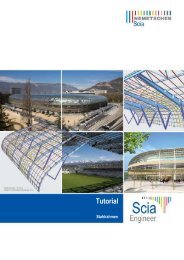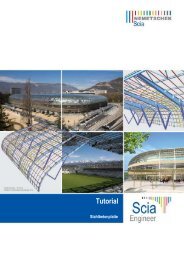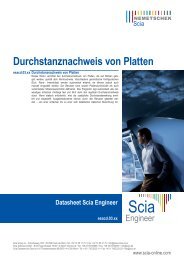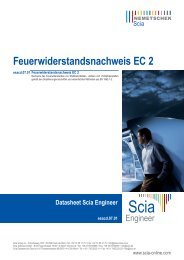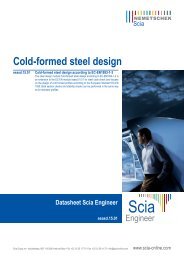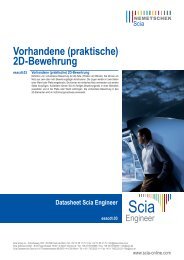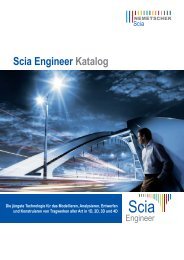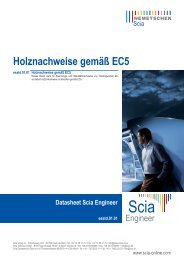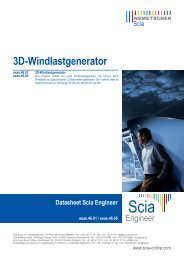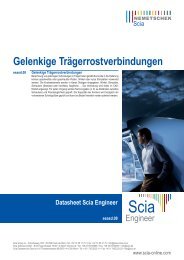Advanced Package Training Scaffolding 2011.1 - Scia-Software GbR
Advanced Package Training Scaffolding 2011.1 - Scia-Software GbR
Advanced Package Training Scaffolding 2011.1 - Scia-Software GbR
Create successful ePaper yourself
Turn your PDF publications into a flip-book with our unique Google optimized e-Paper software.
Annex A: Wind pressure versus Wind force<br />
85<br />
<strong>Scaffolding</strong><br />
In paragraph “6. Load cases” the wind has been calculated with EN1991-1-4 and calculated as a wind<br />
pressure.<br />
Following EN 12810-1, it is also possible to calculate the wind as a wind force using the following<br />
formula (EN 12810-1, (1)):<br />
<br />
= ∙ ∙ ∙ <br />
With<br />
<br />
Ai is the reference area specified in EN 12810-1, Table 4 (see also below)<br />
cf is the aerodynamic force coefficient taken from EN 12810-1, Table 5 (see also below)<br />
cs is the site coefficient taken from EN 12810-1, Table 6 (see also below)<br />
qi is the design velocity pressure in accordance with EN 12810-1, Figure 3:<br />
In this example, the height of the structure is 11m, so qi on 11m is + 940 N/m² and on 0m + 800 N/m².<br />
When inserting one value a average of those two can be taken: 870 N/m².<br />
The reference Area Ai:<br />
Cladding condition of the<br />
system configuration<br />
Reference area Ai<br />
Unclad Area of each component projected in the wind direction<br />
Clad Surface area of the cladding (see A.3 of En 12811-1:2003)<br />
This example was an unclad example. For a component with a diameter of 48,3mm, the area is<br />
0,0483m x Lcomponent.<br />
The aerodynamic force coefficient cf :<br />
Cladding condition of the<br />
system configuration<br />
Force coefficient<br />
Normal to the façade Parallel to the façade<br />
Unclad 1,3 1,3<br />
Clad 1,3 0,1



